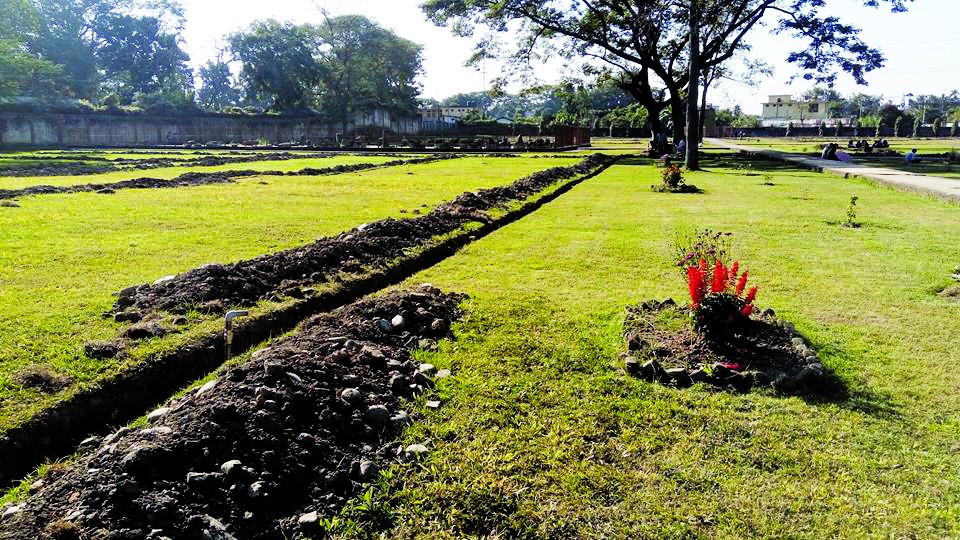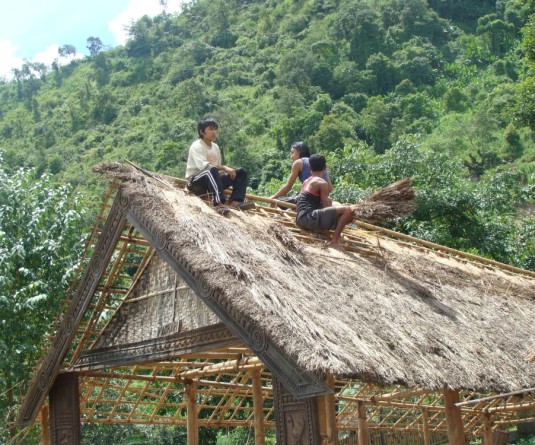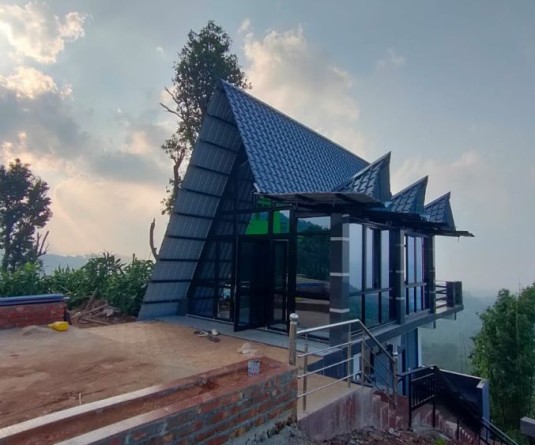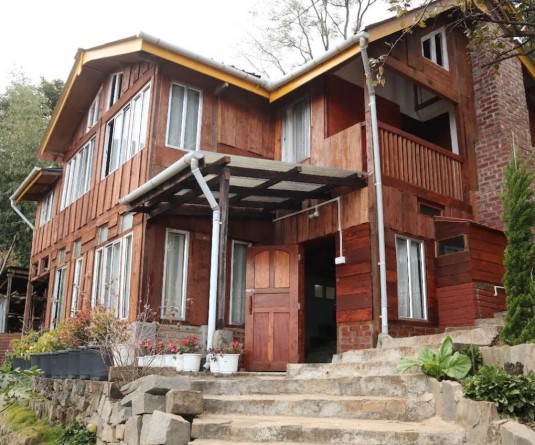Ongoing works at Kachari Rajbari ruins in Dimapur on December 29. (Morung Photo)

Morung Express News
Dimapur | December 29
After years of administrative apathy, some semblance of restorative activity is visible at the historic monument of the ancient Dimasa Kachari capital - popularly known as Rajbari - located adjacent to Supermarket in Dimapur.
On December 28, when The Morung Express visited the site, there was perceptible activity on the ground and workers were peering over blueprints for the current project.
Nemjempong Echa, Horticulture Assistant from the Archaeological Survey of India (ASI), who looks after Nagaland and Manipur, said that after years of neglect, the development process was taken up from June last year. He said that while the ruins are one of the biggest ASI sites in the North East, it has been neglected due to “various circumstances” beyond the ASI’s control.
The ASI, which has been entrusted with the site, has listed the same as ‘Remains of a Fort (Dimapur Ruins),’ Dimapur, on its website. It contains ruins of temples, reservoirs and other monuments, most of which lay scattered albeit glimpses of artistic craftsmanship and intricate designing.
It was among a list of centrally protected monuments in the country released by the ASI in 2011, which the central Ministry of Culture “is understood to be considering central funds for the protection and preservation of the select heritage sites.”
Besides the ‘Dimapur Ruins,’ Nagaland has three other sites on the list. They include the memorials of G.H. Damant, Major Cook and Subedar Nurbir Sahi, in Khonoma Kohima; Stone Cairn to the memory of Damant, Kohima; and Lt. H. Forbeb's Grave, Suchima, Kohima.
Last year, a member of the Kachari Rajbari Preservation Committee (KRPC) told a local daily that the “lack of interest from the department concerned and the citizens in preserving the monument” had led to its ruin.
Right now, several areas have been dug up systemically for water sprinkler as a first phase work. “In the next phase, we plan to develop the pond. And finally there is a plan to make it a Jogger’s Park, for which the landscaping is already done,” informed Echa.
Besides an ASI office building, amenities for visitor’s and internal funding revenue mechanism are also in the offing. Right now, only 15% of the work is done. It will take at least 2-3 years for complete restoration, he added. The ASI's horticulture department is also currently planting some flowers on the site and hopefully next spring, we might be able to beautify it a bit, Echa maintained.
In the garden area, almost all the standing monoliths (around 14) have some defect, while many others lay crumbled on the ground. While the lawns and the ground area have become transformed with a well maintained look, the sites where the monoliths have been kept for exhibition and preservation continue to be overrun by wild plant as well as human incursion in form of various inscriptions and careless thoroughfare. Alongside physical restoration, an educative restoration needs to take place for people to develop respect for history and its monuments.
Besides, conservation, chemical, archaeological efforts and other departmental follow ups are the need of the hour. This will be a gargantuan task given the current status of the ruins with its intricate carved works quickly disappearing from harsh sun rays, Dimapur’s rain and people’s mistreatment of the structures.






